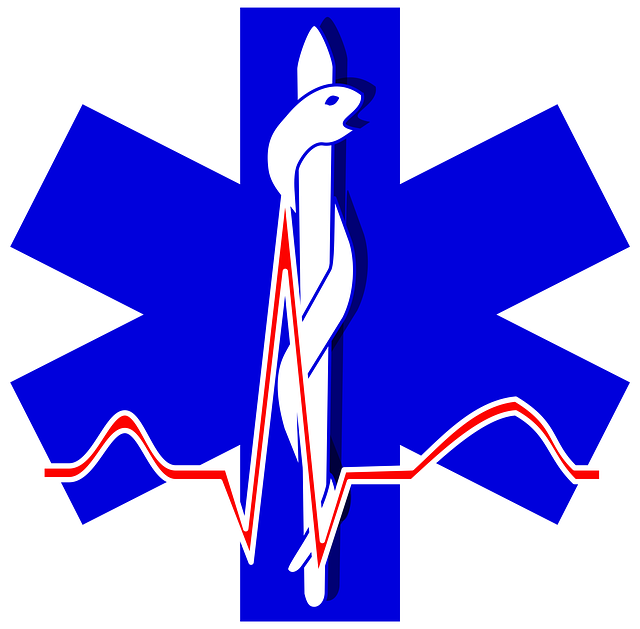Emergency Chiropractic Care: Navigating Auto Accident Relief

Emergency chiropractic care for auto accident victims is vital for immediate pain relief and spinal…….
In-home pet sitting and dog walking services have become popular among busy pet owners, offering con.......
In the aftermath of a car accident, victims often face a myriad of challenges, both physical and emotional. Among the critical aspects of post-accident care is access to specialized treatment that can address the unique spinal and neurological issues that frequently arise. This article delves into the world of Emergency Chiropractic Care for Auto Accident Victims, exploring its significance, global reach, and the transformative impact it can have on the lives of those involved in motor vehicle collisions. By examining various facets, from historical roots to technological innovations, we aim to provide a comprehensive understanding of this essential healthcare service.
Emergency Chiropractic Care (ECC) refers to the immediate and aggressive chiropractic treatment provided to individuals who have been involved in automotive accidents or other traumatic events. It is a specialized form of care designed to address acute spinal injuries, whiplash, and associated neurological symptoms that are prevalent in auto accident victims. ECC aims to reduce pain, improve mobility, and prevent long-term complications by implementing rapid, targeted interventions.
Rapid Assessment: Chiropractors employ a thorough examination to identify spine and nerve system injuries, focusing on the neck, midback, and lower back regions frequently affected in car crashes.
Manual Adjustments: This involves using gentle yet precise manipulation of the spinal column to correct misalignments (subluxations) that can be caused by trauma.
Soft Tissue Therapy: Techniques such as myofascial release, trigger point therapy, and massage are employed to alleviate muscle tension, reduce inflammation, and enhance healing.
Neurological Screening: ECC professionals assess nerve function to detect or prevent pinched nerves, radiculopathy (nerve compression), and other neurological complications.
Education and Empowerment: Patients are taught self-care strategies, including exercises and stretching routines, to manage pain and promote healing between chiropractic sessions.
The concept of emergency chiropractic care has its roots in the broader field of chiropractic medicine, which emphasizes the body’s inherent ability to heal itself. Chiropractors have been providing care for trauma victims since the profession’s inception in the late 19th century. However, it was after World War II and the Vietnam War that ECC gained prominence due to the high volume of soldiers suffering from spinal injuries and whiplash. This led to the development of specialized training programs and protocols tailored to emergency settings.
Emergency Chiropractic Care has transcended geographical boundaries, becoming an integral part of healthcare systems worldwide. Its influence is particularly notable in regions with advanced healthcare infrastructure, where access to specialized services is more readily available.
North America: The United States and Canada have a well-established ECC presence, driven by the high incidence of automotive accidents and the recognition of chiropractic care as a valid treatment option. Many insurance plans cover ECC, making it more accessible.
Europe: Countries like the UK, Germany, and France have incorporated ECC into their healthcare systems, often through specialized clinics within emergency departments or independent practices. The European Chiropractors Union (ECU) plays a significant role in promoting and standardizing ECC across the continent.
Asia: Japan, South Korea, and China have seen a rise in ECC due to increasing motor vehicle ownership and a growing acceptance of alternative medicine. These countries have developed their own unique ECC protocols while also adopting international best practices.
Rest of the World: In regions with emerging economies, access to ECC may be more limited, but awareness is growing. Organizations like the World Federation of Chiropractic (WFC) work to promote and educate healthcare professionals worldwide about the benefits of ECC.
The economic implications of Emergency Chiropractic Care are multifaceted, impacting both healthcare systems and individual patients.
Demand: Auto accidents are a significant source of spinal injuries, creating a consistent demand for ECC services. This demand is influenced by factors such as vehicle ownership rates, traffic congestion, and safety regulations.
Supply: The availability of ECC professionals varies across regions. Developing countries may face challenges in training and retaining specialized chiropractors due to limited resources and competing healthcare priorities.
Private Practices vs. Hospital-Based Care: ECC can be provided in both private practice settings and within hospitals’ emergency departments. Insurance companies often play a role in funding ECC, especially for patients with comprehensive coverage.
Technology Integration: The adoption of advanced diagnostic tools, such as spinal imaging technologies (X-ray, MRI), contributes to the overall cost of ECC services but improves treatment accuracy.
Out-of-Pocket Expenses: Without insurance coverage, ECC treatments can be expensive. However, many patients find financial relief through patient financing options or community health programs.
Long-Term Cost Savings: Early and aggressive intervention through ECC may prevent the need for more intensive and prolonged rehabilitation in the future, potentially reducing overall healthcare costs.
Technological advancements have played a pivotal role in enhancing the effectiveness and accessibility of Emergency Chiropractic Care.
Diagnostic Imaging: Modern imaging techniques, including digital X-ray, MRI, and CT scans, enable chiropractors to obtain detailed images of the spine and nervous system, aiding in accurate diagnosis.
Spinal Decompression Therapy: This non-surgical treatment option is used for disc herniations and bulges, offering pain relief and potential nerve restoration without surgery.
Electrotherapies: Techniques such as electrical stimulation and ultrasound are employed to reduce muscle spasm, promote healing, and alleviate pain.
Telehealth Services: With the rise of telemedicine, ECC professionals can provide remote consultations, guidance, and follow-up care, increasing accessibility for rural or underserved communities.
Emergency Chiropractic Care has demonstrated significant benefits in improving patient outcomes after auto accidents:
Pain Reduction: Rapid and targeted adjustments can provide immediate pain relief, allowing patients to regain mobility and participate in rehabilitation more comfortably.
Improved Functionality: ECC aims to restore normal spinal function, which is crucial for overall health and the prevention of chronic conditions like arthritis.
Faster Recovery: Early intervention may shorten the duration of recovery, reducing the risk of complications and enabling patients to return to their regular activities sooner.
Cost Efficiency: By addressing issues early, ECC can potentially reduce long-term healthcare costs associated with chronic pain management or extensive rehabilitation.
Despite its many advantages, Emergency Chiropractic Care faces certain challenges:
Regulatory Variability: Different countries have varying levels of recognition and regulation for ECC, impacting its availability and insurance coverage. Standardization and international collaboration are essential to addressing this issue.
Research Gaps: While some studies support the effectiveness of ECC, high-quality research is needed to establish evidence-based protocols and improve treatment outcomes.
Public Awareness: Increasing public awareness about the benefits of ECC can encourage early seeking of care, potentially improving patient outcomes.
In the future, integration of ECC into primary healthcare systems, ongoing technological advancements, and continued research will likely shape the landscape of emergency spinal care globally.

Emergency chiropractic care for auto accident victims is vital for immediate pain relief and spinal…….

In the immediate aftermath of a car accident, emergency chiropractic care is vital for auto accident…….

Emergency chiropractic care is a specialized service for auto accident victims with whiplash and bac…….

Immediate emergency chiropractic care for auto accident victims is vital to address hidden injuries…….

Auto accidents can cause a range of injuries, from physical to emotional. Emergency chiropractic car…….

Auto accidents can cause various injuries with delayed onset. Emergency chiropractic care is vital f…….

Auto accident victims often experience immediate pain and musculoskeletal injuries. Emergency chirop…….

Immediate pain after a car collision requires attention. Emergency chiropractic care is vital for au…….

Immediate recognition of crash trauma symptoms is crucial for auto accident survivors. Hidden injuri…….

Auto accidents cause physical and emotional trauma requiring immediate attention. Emergency chiropra…….